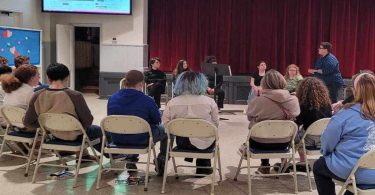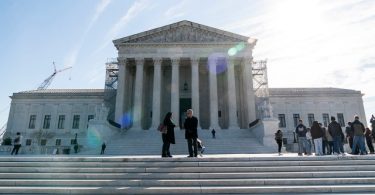Most States in the United States of America ask their citizens to stay home, but not all States follow such a directive.
Some states have no plans of re-opening their economies, others already started,
With 763,083 COVID-19 cases killing 40,495 Americans and only 70,806 recovered, USA can be considered the global epic-center of the virus at this time.
The top 10 worst States based on people dead per millions are:
- New York: 933
- New Jersey: 473
- Connecticut: 315
- Louisiana: 278
- Massachusetts: 250
- Michigan: 240
- Rhode Islands: 142
- District of Columbia: 140
- Illinois: 101
- Pennsylvania: 97
The healthiest 10 US States as of now in the number of dead per million:
- Wyoming: 3
- Hawaii: 7
- South Dakota: 8
- Utah: 9
- West Virginia: 10
- Montana: 10
- Alaska: 12
- Arkansas: 13
- North Dakota 13
- Nebraska: 15
Here is where the United States stands:
- cases: 763,083
- death: 40,495
- Total Recovered: 70,806
- Active Cases: 651,782
- Critical ill: 13,566
- Total cases per 1 million population: 2,305
- Deaths per 1 million population: 122
- Total tests: 3,858,476
- Tests per 1 million population: 11,657
Every State and Territory of the United States of America is in a state of emergency.This is where each state is currently with restrictions in place.
Alabama
Gov. Kay Ivey issued a stay-at-home order set to expire on April 30.
Lt. Gov. Will Ainsworth announced the formation of a task force to reopen the state’s economy. It is scheduled to report its suggestions to the governor on April 22.
When the economy starts to reopen, Ivey said during a press briefing it will be a slow process over time, “segment by segment or region by region.”
Alaska
Gov. Mike Dunleavy has ordered residents to stay at home until April 21. Dunleavy has said that Alaskans can again schedule elective surgeries for on or after May 4 and visit their doctors for non-urgent needs.
Arizona
Gov. Doug Ducey issued a stay-at-home order that will expire on April 30. The governor emphasized the importance of maintaining social distancing and continuing to make “responsible choices.”
Arkansas
Gov. Asa Hutchinson has not issued a stay-at-home order. Schools will be closed for the rest of the academic term. Fitness centers, bars, restaurants and other public spaces are closed until further notice.
Hutchinson told reporters on April 16 that he wants to bring back elective surgeries.
California
Gov. Gavin Newsom issued a stay-at-home order on March 19 that has no set end date. Newsom announced a joint Western States Pact with Oregon Governor Kate Brown and Washington Governor Jay Inslee on April 13.
“Health outcomes and science — not politics — will guide these decisions” to reopen the states, according to a joint statement from the governors.
Newsom outlined a framework for reopening the economy in the Golden State on Tuesday that he said was predicated on the state’s ability to do six things: expand testing to identify and isolate the infected, maintain vigilance to protect seniors and high-risk individuals, be able to meet future surges in hospitals with a “myriad of protective gear,” continue to collaborate with academia on therapies and treatments, redraw regulations to ensure continued physical distancing at businesses and schools and develop new enforcement mechanisms to allow the state to pull back and reinstate stay-at-home orders.
Colorado
Gov. Jared Polis extended the state’s stay-at-home order, which now remains in effect until April 26.
He said April 15 that the key information state officials need to determine when parts of the economy can be reopened is likely to come within the next five days.
Connecticut
Connecticut Gov. Ned Lamont extended the mandatory shutdown in the state until May 20. Connecticut has joined a coalition with the Northeastern states of New Jersey, New York, Pennsylvania, Delaware, Rhode Island and Massachusetts to coordinate the reopening of the economy, according to a news release from New York Governor Andrew Cuomo’s office.
Lamont said he believed it would take at least another month before the state could decide on how and when to open things back up and emphasized “this is no time to relax.”
Looking to revive the state’s economy, Lamont announced Thursday the formation of the “Reopen Connecticut Advisory Board.”
Delaware
Gov. John Carney issued a statewide stay-at-home order that will remain until May 15 or until the “public health threat is eliminated.”
Delaware has joined a coalition with the Northeastern states of New York, New Jersey, Connecticut, Massachusetts, Pennsylvania, and Rhode Island to coordinate the reopening of the economy, according to a press release from NY Governor Andrew Cuomo’s office.
The governor said April 17 that once the state reopens, social distancing, face coverings in public, washing hands, limited gatherings and vulnerable populations sheltering in place will remain.
District of Columbia
Washington, DC Mayor Muriel E. Bowser extended a stay-at-home order until May 15.
Florida
Southeast Florida, which is the epicenter of the outbreak in the state, could be treated differently than other parts, the governor said.
Georgia
Gov. Brian Kemp issued a statewide shelter-in-place order that runs until April 30. The governor also extended the public health emergency through May 13. All K-12 public schools will remain closed through the end of the school year. Kemp emphasized the importance of expanding testing before reopening the state.
Hawaii
Gov. David Ige issued a stay-at-home order for Hawaii residents which will last through at least April 30.
He said Thursday the state doesn’t satisfy the federal criteria for phased reopening, one of which is a 14-day downward trend in the number of cases.
Idaho
Gov. Brad Little amended his order April 15 to allow for some businesses and facilities to reopen for curbside pickup, drive-in and drive-thru service and for mailed or delivery services. It is now effective through the end of the month.
The governor issued an “Order to Self-Isolate” which will expire on April 30 unless extended.
Little said that the measures were working and Idaho is “truly seeing a flattening of the curve.”
Illinois
Gov. J.B. Pritzker issued a stay-at-home order through at least April 30.
Pritzker said during a media briefing Monday that he believes the current state in Illinois has been enough to slowly start lifting shelter-in-place orders so that some industry workers can go back to work.
Although there is no clear timeline, he hopes that restarting production will go “industry by industry, and maybe company by company.”
Indiana
Gov. Eric Holcomb on April 17 extended the stay-at-home order through May 1.
The extension will give the state additional time to look into what the best way is to reopen sectors of the economy, Holcomb said. He said he would work with the state hospital association to see when elective surgeries could resume.
Indiana is part of a Midwest coalition of states looking at reopening possibilities
Iowa
Gov. Kim Reynolds has not declared a stay-at-home order. Reynolds issued a State of Public Health Disaster Emergency on March 17, ordering all nonessential businesses to close until April 30.
The governor formed an Iowa economic recovery task force consisting of state leaders and private business leaders and announced plans to discuss with education leaders about the possibility of reopening schools.
Reynolds on April 16 announced that residents of the region of the state with the most cases, where there was an outbreak at a food processing plant, cannot get together until April 30.
Kansas
Gov. Laura Kelly issued a stay-at-home order, which has been extended until May 3.
The initial order was set to expire April 19.
Kelly said Kansas expects to see its peak of coronavirus cases between April 19-29, based on projections.
Kentucky
Gov. Andy Beshear issued a “Healthy at Home” orde March 25 that is in effect indefinitely.
Kentucky is working with six other states to coordinate reopening measures.
The governor said April 16 it will be a phased-in approach “where we can have that that symbiotic bump … to make sure that the steps that we take ultimately have a bigger reward or bigger output, because they are being replicated in other areas that we already do so much business with.”
Louisiana
Gov. John Bel Edwards extended the state’s stay-at-home order through April 30. The governor announced on April 16 the formation of an economic recovery task force.
Maine
Gov. Janet Mills issued a “Stay Healthy at Home” executive order through at least April 30. Mills extended the state’s civil state of emergency until May 15.
Maine is in touch with neighbors New Hampshire and Vermont on reopening measures, the governor said April 14.
Maryland
Gov. Larry Hogan issued a statewide stay-at-home order on March 30. There is no current potential end date.
Hogan said a cooperation amongst other governors on when to reopen the states would be a “good idea.”
People in Maryland will be required to wear face coverings in stores and on public transportation as of April 18.
Massachusetts
Gov. Charlie Baker issued an emergency order requiring all nonessential businesses to close facilities until May 4.
Massachusetts has joined a coalition with the Northeastern states of New York, New Jersey, Connecticut, Pennsylvania, Delaware, and Rhode Island to coordinate the reopening of the economy, according to a press release from NY Governor Andrew Cuomo’s office.
Baker told residents of his state that officials have begun conversations around reopening the state but there’s still a lot of work that needs to be done before a plan is set into motion.
The state will need to have testing, tracing, isolation and quarantine procedures in place to reopen, the governor said.
Michigan
Gov. Gretchen Whitmer extended the state’s stay-at-home order through April 30.
The four factors the governor will take into consideration before reopening Michigan include a sustained reduction in cases, expanded testing and tracing capabilities, sufficient healthcare capacity, and the best practices for the workplace.
At the end of week that saw a protest at the Capitol and an anti-Whitmer tweet from Trump, the governor said April 17: “There’s no one I think is more eager to start reengaging sectors of our economy than I am. But the last thing I want to do is to have a second wave here and so we’ve got to be really smart.” She said the first businesses to reopen will be in low-risk sectors.
Minnesota
Gov. Tim Walz extended the state’s stay-at-home order through May 3.
He also signed an executive order extending the peacetime emergency for an additional 30 days until May 13.
Walz emphasized the importance of expanding testing and tracing the spread of the virus before opening the state.
The governor’s plan to open up the economy is to “test, we have to do contact tracing, and we have to isolate the people who need to be isolated, and this has to be on a massive scale,” Walz said.
Mississippi
Gov. Tate Reeves has extended a shelter-in-place order to April 27.
Reeves said April 17 the state will begin relaxing some of the restrictions on nonessential businesses by allowing them to offer services via drive-thru, curbside or delivery.
Reeves has said the state needed to open things back up as quickly and as responsibly as possible.
Missouri
Gov. Mike Parson on April 16 extended the stay-at-home order through May 3.
Montana
Gov. Steve Bullock extended the state’s stay-at-home order through April 24.
Bullock held a governor’s coronavirus task force tele-town hall for Montanans on Monday in which he said following the state’s guidelines will allow the state to reopen sooner rather than later.
Bullock said he does not know when the stay at home order will be lifted.
Nebraska
Gov. Pete Ricketts issued the “21 Days to Stay Home and Stay Healthy” campaign on April 10. Ricketts ordered that all hair salons, tattoo parlors and strip clubs be closed through April 30 and all organized group sports canceled until May 31.
Nebraska is one of the states that has not issued a stay-at-home order to limit the spread of coronavirus nationwide. Ricketts has not made any plans to reopen the state.
The state’s campaign is based on six rules: staying home, socially distancing at work, shopping alone and only once a week, helping kids social distance, helping seniors stay at home and exercising at home.
Nevada
Gov. Steve Sisolak issued a stay-at-home order that expires April 30.
He said April 16 that reopening would happen with gradual steps.
New Hampshire
Gov. Chris Sununu issued a stay-at-home order until May 4.
Sununu told reporters on April 16 that he’ll decide on whether to extend the order before May 4.
All public and private schools will remain closed for the rest of the school year, and students will continue remote learning, he said.
New Jersey
Gov. Phil Murphy issued a stay-at-home order on March 21 that has no specific end date.
New Jersey has joined a coalition with the Northeastern states of New York, Connecticut, Pennsylvania, Delaware, Rhode Island and Massachusetts to coordinate the reopening of the economy, according to a news release from New York Gov. Andrew Cuomo’s office.
New Mexico
Gov. Michelle Lujan Grisham extended the state’s emergency order to April 30.
She said Thursday her state is evaluating the federal guidelines but authorities cannot put the “cart before the horse.”
New York
Gov. Andrew Cuomo issued a “New York State on PAUSE” executive order which took effect on March 22. Schools and nonessential businesses are ordered to stay closed until May 15.
New York has joined a coalition with the Northeastern states of New Jersey, Connecticut, Pennsylvania, Delaware, and Rhode Island and Massachusetts to coordinate the reopening of the economy, according to a press release from Cuomo’s office.
The governor has not come to any decision on when businesses will reopen and said he rejected “any elected official or any expert who says I can tell you what’s going to happen four weeks from today.”
The governor said April 16 there are factors for when a business can reopen, including how essential it is and what is the risk of catching the virus.
North Carolina
Gov. Roy Cooper issued a stay-at-home order for the state effective until April 29.
The governor said that the more people adhere to social distancing requirements in April, the sooner the state will loosen restrictions.
North Dakota
Gov. Doug Burgum has only shut down schools, restaurants, fitness centers, movie theaters and salons. Burgum declared a state of emergency on March 13. North Dakota is one of the states that has not issued a stay-at-home order.
Burgum has said he hopes some businesses can start to reopen May 1.
Ohio
Gov. Mike DeWine issued a statewide stay-at-home order that will remain in place until May 1.
He said April 16 that on that date the state will begin the first phase of reopening.
Oklahoma
Gov. Kevin Stitt said April 15 that he is working on a plan to reopen the state’s economy, possibly as early as April 30.
At the same time, Stitt extended Oklahoma’s “Safer at Home” order for adults over the age of 65 and other vulnerable residents until May 6. Elective surgeries will be allowed to resume April 24.
Stitt has said the state would have to ease into reopening its economy.
Oregon
Gov. Kate Brown issued an executive order directing Oregonians to stay at home that “remains in effect until ended by the governor.”
Brown announced a joint Western States Pact with California Gov. Gavin Newsom and Washington Gov. Jay Inslee on April 13.
Brown said she would not ease restrictions before seeing five components in place: declining growth rate of active cases, sufficient personal protective equipment, surge capacity in hospitals, increased test capacity, contact tracing and isolating positive cases, and strategies to protect vulnerable communities.
Pennsylvania
Gov. Tom Wolf issued stay-at-home orders across the state until April 30.
Pennsylvania has joined a coalition with the Northeastern states of New Jersey, New York, Connecticut, Delaware, Rhode Island and Massachusetts to coordinate the reopening of the economy, according to a press release from New York Gov. Andrew Cuomo’s office.
He said no one can flip a switch on the economy and the state shouldn’t rush.
Rhode Island
Gov. Gina Raimondo issued an emergency declaration extending the state’s stay-at-home order to last until May 8.
Rhode Island has joined a coalition with the Northeastern states of New Jersey, New York, Connecticut, Delaware, Pennsylvania, and Massachusetts to coordinate the reopening of the economy, according to a press release from NY Governor Andrew Cuomo’s office.
To reopen the state, Raimondo said there would need to be advanced testing and contact tracing put in place.
South Carolina
Gov. Henry McMaster extended his previous “State of Emergency” executive order through at least April 27.
South Dakota
Gov. Kristi L. Noem has not issued a stay-at-home order.
Tennessee
Gov. Bill Lee extended the state’s stay-at-home order until April 30.
Lee said the state would begin reopening the economy in May.
Texas
Gov. Greg Abbott ordered all Texans to stay home through April 30.
Instead of kicking off a full restart, the Texas governor announced April 17 that a group of medical and economic experts will guide him through a series of incremental steps aimed at slowly reopening the state’s economy.
Utah
Gov. Gary Herbert extended the state’s “Stay Safe, Stay Home” directive through May 1. Schools will be closed for the remainder of the year.
Utah has not issued a stay-at-home mandate.
People have been asked to stay home as much as possible and maintain 6 feet from others when out. Restaurants are not allowed to have dining rooms open. Schools are closed.
Herbert said the state is making plans for how and when restrictions will be lifted, but continued to urge citizens to stay home.
Vermont
Gov. Phil Scott issued a “Stay Home, Stay Safe” order that has been extended until May 15.
Scott on April 17 outlined a five-point plan to reopen the state while continuing to fight the spread of the coronavirus during a news conference.
Part of that plan includes certain businesses such as construction, home appraisers, property management and municipal clerks to return to work on April 20, with social distancing measures in place. These businesses will be allowed a maximum of two workers.
On May 1, farmers markets will be able to operate with strict social distancing guidelines in place, Scott said.
Virginia
Gov. Ralph Northam issued a stay-at-home order effective until June 10.
Northam has made it clear that the state must make decisions based on “science, public health expertise, and data,” Secretary of Health and Human Resources Daniel Carey said.
Washington
Gov. Jay Inslee extended Washignton’s stay-at-home order until May 4, saying “We are yet to see the full toll of this virus in our state and the modeling we’ve seen could be much worse if we don’t continue what we’re doing to slow the spread.”
Inslee announced a joint Western States Pact with California Gov. Gavin Newsom and Oregon Gov. Kate Brown on April 13.
West Virginia
Gov. Jim Justice issued a stay-at-home order until further notice.
Despite numbers suggesting that the state is starting to do better, Justice said it wasn’t time to relax social distancing measures or asking people to stop staying home.
Wisconsin
Gov. Tony Evers has extended his state’s stay-at-home order to expire May 26, according to a statement from the governor’s office.
The extension also loosens some restrictions on businesses. Golf courses are allowed to reopen, and public libraries and arts and crafts stores may offer curbside pickup, the April 16 announcement said.
Wyoming
Gov. Mark Gordon submitted a request asking for a federal disaster declaration for Wyoming on April 9. Wyoming is one of the states without a stay-at-home order.
Gordon extended statewide public health orders through April 30 and issued a directive requiring travelers to quarantine for 14 days.







